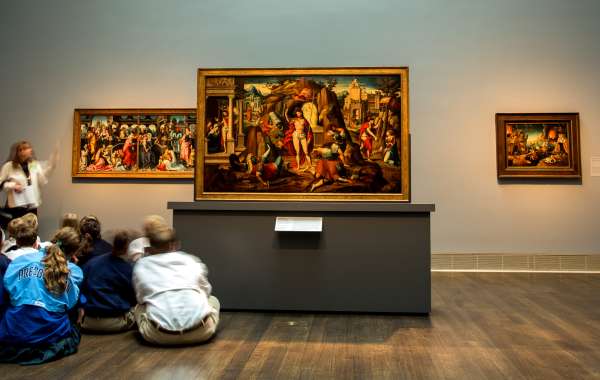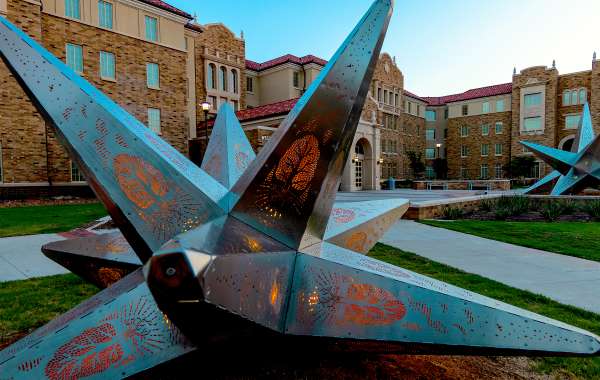A young, diverse population and vital urban areas form the ideal crucible for that elusive thing called art. We traipsed through chapels that double as galleries, museums filled with modern masterpieces, and installations by global talent to understand how Texas stands at the cultural vanguard.
Texas occupies a certain space in the popular imagination, and outsiders can be forgiven for thinking it's all cowboys, open country, and big sky. The truth? About 85 percent of the population is urban, and with that comes a thriving modern art scene. We explored museums, galleries, and kitschy outposts to find the creative pulse of modern Texas.
(Fort) Worth It
With more than 7 million residents, the Dallas–Fort Worth Metroplex comprises one of the premier art centers in the United States, if not the world. Dallas is on the international cutting edge, and Fort Worth bustles with an outsized art scene.
One of the city's crown jewels is the Modern Art Museum of Fort Worth, or simply the Modern, a haven of contemporary creations. Designed by Japanese architect Tadao Ando and erected in 2006, the building contains more than 2,600 works of art from the post–World War II era.
We spent an afternoon getting lost in the Modern's 275,000 square feet of space, admiring the modern works, including a latter-day Picasso, a non-drip Pollock, and a Warhol self-portrait. My eyes feasted on the rich reds and pinks of Philip Guston's grotesquely gorgeous, "Painter's Form II," and in person, the expressionism of Richard Diebenkorn, represented here with works from 1953 and 1962, pops with color and form.
The Modern is one of the major members of the Fort Worth Art Dealers Association, a nonprofit uniting more than 26 organizations, big and small. The group holds gallery nights, art competitions, and fundraisers to inspire interest for the art scene, which encompasses alternative, non-commercial spaces like Gallery 414, cutting-edge concepts like the venue/gallery/garden Artspace 111, and the venerable Kimbell Art Museum, to name just a few.
We roamed the halls of the Kimbell, a gorgeous Louis Khan–designed building in the heart of Fort Worth. Founded in 1936, the Kimbell Art Foundation is committed to collecting works of “definitive excellence” spanning every continent and era. Awe crept over us each time we found ourselves in the same room as a Gauguin self-portrait, a blue-hued Cézanne, or a Mondrian grid painting. The museum's smattering of outdoor sculptures, including lesser-known gems like Fernand Léger's whimsical Walking Flower, also made for a broadening experience.
Houston High Art
Unsurprisingly, some of the most impressive selections of modern art in Texas belong to its largest city, Houston. The three-mile-wide Houston Museum District is a nucleus of high culture, where 20 museums enlighten the public on art, science, and history.
We explored the district's stainless-steel Contemporary Arts Museum, a non-collecting space through which forward-looking exhibits from regional and international artists continually pass. While there, we caught “Double Life,” an ultra-modern suite of multimedia and sculptural installations by rising artists from Paris, L.A., and South Korea. It featured a looping film in which speakers mouth the words to dialogue from the documentary Paris Is Burning, a video rumination on performance, and an otherworldly sculptural installation we were able to walk through. It was an immersive, mind-expanding trip.
Just a few blocks to the north lies the Menil Museum, another Houston highlight whose permanent collections gave us a sweeping look at art from ancient times to the modern era. We marveled at works by Van Gogh, Matisse, and Rothko in the modern and contemporary collection, while shaking off the occasional goose bump in the surrealism collection, which features more than 300 works.
FUN FACT
Sometimes a single artwork packing a big idea can grab more attention than entire museums. That's the case with Prada Marfa, a sculptural installation by artists Elmgreen and Dragset that has stood 26 miles northwest of Marfa since 2005. A true-to-life replication of a Prada store, the work serves no commercial purpose and has become an intriguing road stop, a backdrop for selfies, and an open-ended reflection on the nature of art.















